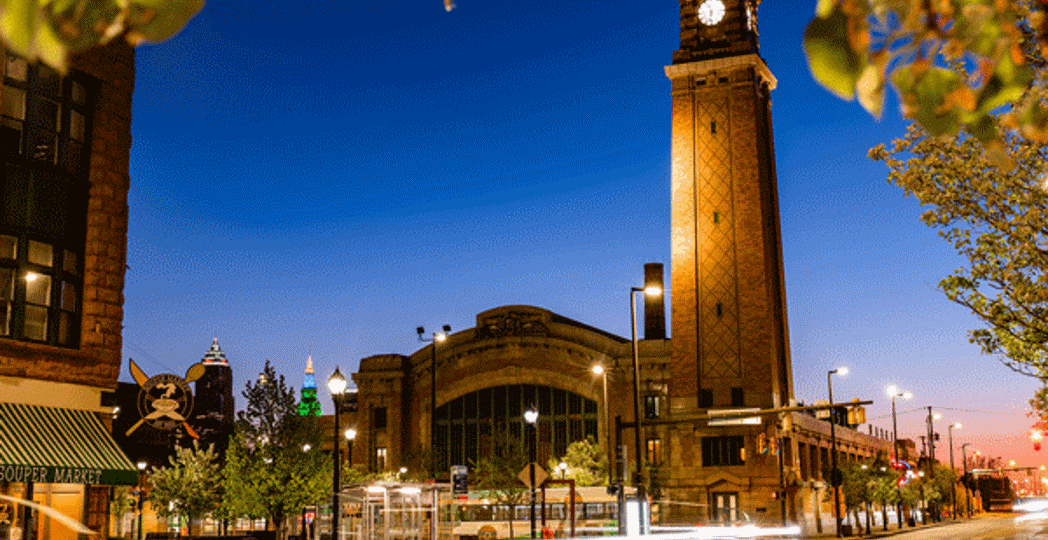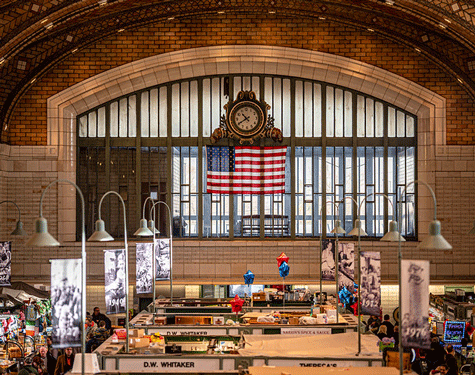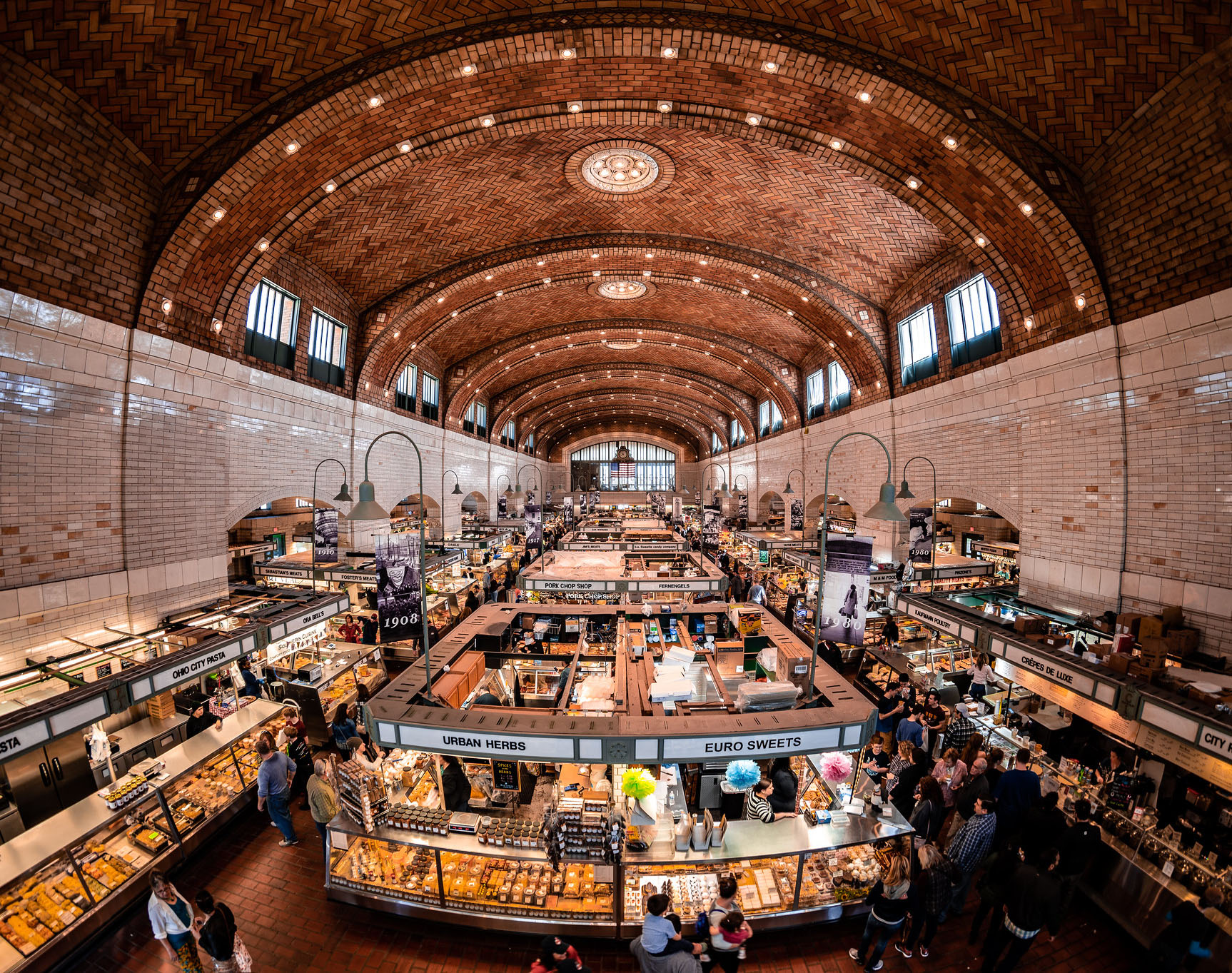$15M West Side Market Proposal A “Slap in the Face” to City’s “Crumbling Neighborhoods,” Says Council President
by Dillon Stewart | Apr. 14, 2023 | 12:00 PM

Erik Drost
Don Whitaker has seen his fair share of proposals to save the West Side Market in his 32 years as owner of D.W. Whitaker Meats. But never has a plan felt so close and so solid as the proposal Mayor Justin Bibb announced Thursday.
“I've been here forever, and in 1999, I can show you the plans that they had. Mayor White was the mayor at that time, and they didn't go through with it then,” says Whitaker, who also serves as the president of the United West Side Market Tenants Association. “They've spent so much money over the years on research, but they never go far from it.”
This plan, devised through the leadership of an outside consultant hired to help the West Side Market transition to a nonprofit, certainly seems to have the legs to go far.
On April 24, Bibb plans to introduce legislation asking to divert $15 million in ARPA, or American Rescue Plan, funds to update the market's basement. The city is also proposing a multi-phased overhaul that prioritizes infrastructure updates before turning to public-facing improvements. Those infrastructure updates would include repairing the roof and facade; adding air conditioning; upgrading heating, electrical and water infrastructure; and improving accessibility.
But the public-facing features have garnered the most excitement among market goers and even vendors — some of whom were initially weary of changing the market’s dynamic.
Proposed Changes to the Market
Perhaps the biggest change would come from turning the North Arcade into a food hall and bar, which would serve hot and ready dishes from about 12 independent vendors and likely operate on a different schedule. In addition to being the most-asked-for addition by visitors, this could improve branding, increase foot traffic and bring in revenue. Prepared food vendors would also rely on a commercial kitchen — something the market does not have onsite — in the old locker room above the West Side Market Cafe.
The city believes the market can generate an estimated $17.1 million from food and beverage sales annually.
Additionally, the mezzanine — which is a gorgeous but unused space with glass enclosures near the ledge where shoppers can overlook the market — would have increased seating and even a hands-on test kitchen for cooking demonstrations.
At a Wednesday night meeting at the West Side Market Cafe, Jessica Trivisonno, senior strategist for the West Side Market, presented the proposal to just more than half of the market’s merchants.
“The response was really positive,” she says. “Somebody today told me that they were really excited to see a real plan — not just a plan to plan but an actual plan of how the market can operate and how it can become financially self-sufficient and what the actual changes look like. And what we heard from them was that this is the right direction.”

Pushback from Council
Not everyone is as excited about the proposal. Cleveland City Council President Blaine Griffin says he likes the plan, but he believes putting $15 million into one building would be a “slap in the face” to residents of neighborhoods that are “deteriorating.”
Simply, he calls it a matter of “competing interests.”
“We cannot in good conscience send money to one city asset while the rest of the city continues to crumble,” says Griffin. “How can I go to the public and say we’re going to put an enormous amount of money into the West Side Market when their neighborhood is crumbling, falling apart and deteriorating at a rapid rate? I hope people will see the dilemma that I'm in and sympathize with what we have to deal with this council.
“We have competing priorities and people across the city from Collinwood, Kamm’s Corner, Glenville, all the way to Lee-Harvard, and everywhere in between, that have interests. They have infrastructure needs. They need home repairs. They need down payment assistance, recreational facilities.”
It would be wrong, Griffin says, to label him or council as anti-West Side Market. City Council, he also reminds, has supported the West Side Market to the tune of $6 million for capital improvements in the past two years. The legislative body also voted to allow the historic space to transition to nonprofit operation after years of council that refused to do so.
Griffin is open to giving more money to the historic venue, but he simply thinks the price tag is too high for a city that’s “cash strapped.”
“I was hoping the nonprofit committee would come up with a fiscal strategy that may be able to help us figure out how [the market] may be able to leverage other dollars and raise money in different ways and different places,” says Griffin. “I mean, they asked for independence. One of the things that really is always perplexing to me is that there are so many people that say we don't want the city to manage this because the city doesn't do a good job. They say, ‘We want to manage this structure because we believe we can raise more money. We believe we can operate more efficiently. We believe we can come up with solutions to the questions that you're asking right now.’ But then you turn around and some people are upset because they're saying that the city won't give them more money. And what I'm saying is that it's not fair to put the city in that position because there's competing interests across this city.
“Most of the people in this city don't even have a grocery store in their own neighborhood, and they don't come all the way over here to the West Side Market. So how does this benefit the entire neighborhood? And quite frankly, I'm not sure what return on investment we get because there are vendors there, but are we getting a big yield and return on investment? I'm not sure. I think it's a great asset. I do think we should find ways to fund it, but I want to make sure we’re being fair with everybody.”

Vendors Fight Back
The response has frustrated Whitaker and other vendors, who have taken to social media to rally support.
“The city owns the building. They neglected it. They need to ante up. There are cities all around the country that are actually trying to start markets, and here, they're trying to destroy one that's been here for 110 years,” he says. “It's just kind of a slap in the face from City Council.”
Trivisonno wouldn’t answer whether the Bibb administration expected the council to push back from the jump, but funding a project like this will always present challenges, she says.
Once legislation is presented next week, it will be assigned to a special committee. From there, it will visit the committee of finance, diversity, equity and inclusion before working through the full body. The entire process typically takes about two or three weeks, Griffin says, though things could get held up longer. If funding can be secured in a timely manner, Trivisonno hopes the project could be completed in about five years.
For supporters like Trivisonno and Whitaker, this is a no-brainer.
“Since Day One, Mayor Bibb has said West Side Market is a priority — not just for his administration but for the region,” says Trivisonno. “I have a hard time imagining why other people who care about Cleveland wouldn’t want to make that a priority themselves.”

Dillon Stewart
Dillon Stewart is the editor of Cleveland Magazine. He studied web and magazine writing at Ohio University's E.W. Scripps School of Journalism and got his start as a Cleveland Magazine intern. His mission is to bring the storytelling, voice, beauty and quality of legacy print magazines into the digital age. He's always hungry for a great story about life in Northeast Ohio and beyond.










